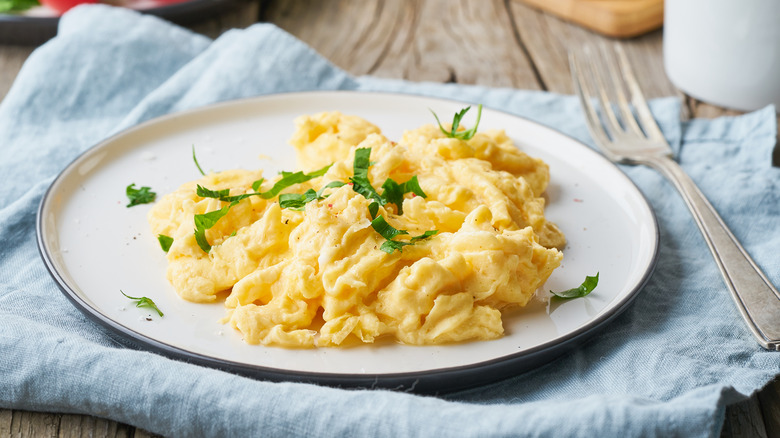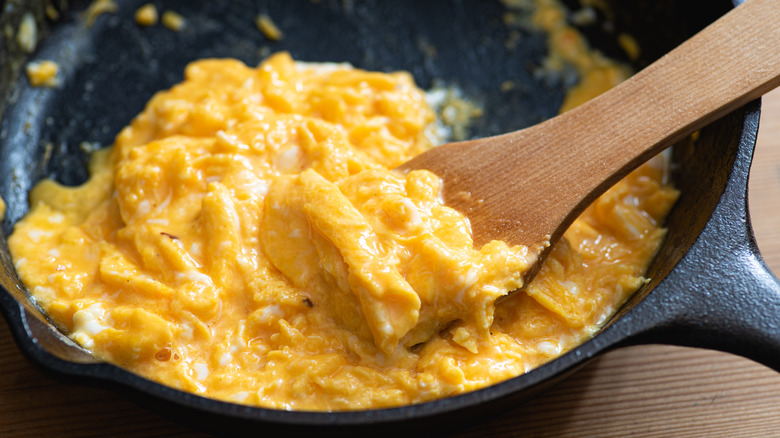The Key Tip For Cooking Softer Scrambled Eggs
The distinctions between the various styles of scrambled eggs have to do with how they are cooked. French-style scrambled eggs are cooked lightly, with a barely set curd and runny texture. Hard-style scrambled eggs, which you'll likely find in diners, are cooked longer and develop a firmer, more pronounced curd. Soft-style scrambled eggs offer a middle ground. They are simultaneously rich and velvety in texture while also having a more defined curd. This is achieved with the use of two key components.
The first key to soft-scrambled eggs is to keep the heat low. You want the eggs to cook rather slowly to have more control over their consistency. The low heat also helps retain the moisture in the eggs, which is critical to achieving a softer texture. Keeping the eggs on high heat for too long will dry them out, resulting in a potentially bland mess.
The second component to success is to keep the eggs moving in the pan. The movement should be more of a gentle stir than an aggressive whisk. The key is to keep your instrument, either a rubber spatula or a wooden spoon, moving so the air is knocked out of the eggs. This will make them creamy instead of fluffy. Keep these two components in mind when you're preparing some soft-scrambled eggs for an elegant breakfast.
How to make soft scrambled eggs
To make soft-scrambled eggs a reality, you only need a non-stick pan and a rubber spatula or wooden spoon. Butter is always the preferred cooking fat for eggs, though olive oil works well too. While the butter melts in the pan over medium-low heat, beat your eggs vigorously until the whites and yolks are combined, and season with salt and pepper. One thing to note, if the butter in the pan has gone brown, your heat is too high.
Begin to scramble the eggs as soon as they hit the pan. Remember, you are not coming at these eggs with any intensity. Instead, you are gently moving them around in the pan so that they will develop that rich texture. You can take momentary breaks, but not for more than 30 seconds at a time. Curds will start forming at around the 5-minute mark.
As soon as you get a more consistent curd, around the 10-minute mark, remove the eggs from the heat. They will continue to cook for another 30 seconds, but getting them away from the heat at this stage will ensure that desired custardy texture. You can garnish these eggs with whatever you like — and they work best when spooned onto a piece of toast. Follow these simple rules, and you've got yourself the making of a rich, flavorful breakfast.

